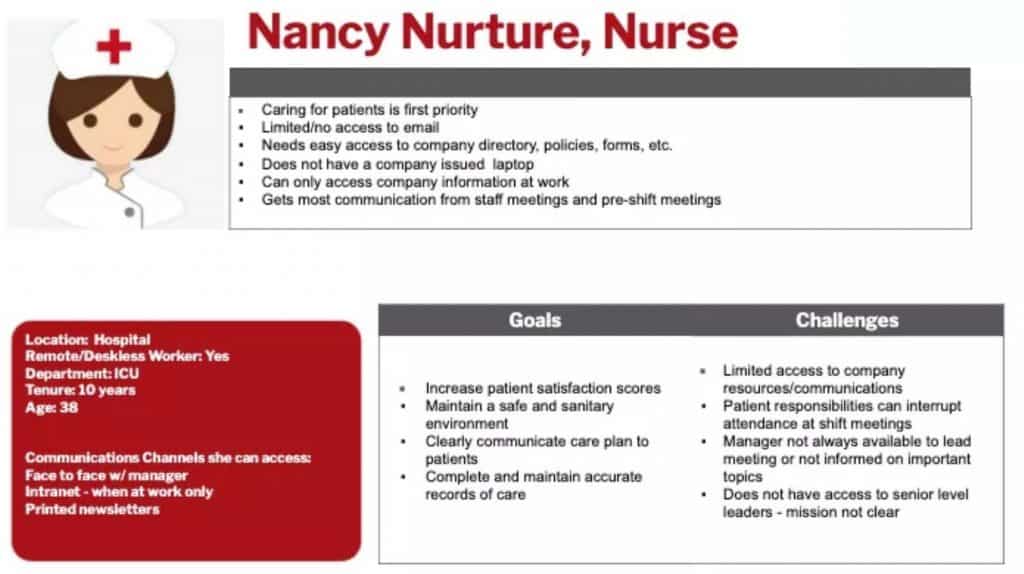Last updated on March 21, 2024 at 07:11 am
Does this scenario sound familiar? You recently shared the results of your employee engagement survey, and it’s clear your employees don’t feel connected to the leadership team. They want more transparency on the state of the business. And they don’t see leaders walking the talk when it comes to the vision and values of the organization. The response from the executive team is, “We need more and better internal communication!” And then they look to you. If you find that leaders are looking to the communications team more today than ever before, you’re not alone. 75% of communicators feel their value has increased since the COVID-19 pandemic. Now’s the time to let your executive communications strategy shine.
What is an Executive Communication Plan?
Before we can talk about forming an executive comms plan, we need to define exactly what it is.
Executive communication is all communication coming from a member of the senior leadership of a company. This includes face-to-face communication like town hall meetings or coffee chats, as well as emails, employee app posts, and messages shared through your intranet.
An executive communications plan is therefore the strategic approach to sharing executive communications with employees in a way that achieves key business objectives (e.g. retention, higher employee engagement, etc.).
How Do You Write an Executive Communications Plan?
Writing your executive comms plan can be intimidating. But here are the seven steps for success when writing an executive communications plan to help you get it right:
- Meet with all stakeholders regularly. Use this meeting to build relationships with leaders around your organization as well as the C-Suite executives.
- Define goals for every planned communication. One way to earn a seat at the table is to prove that employee communication is about more than building “awareness.” It ties directly to your primary business goals and ROI (e.g. time savings, retention, higher productivity). This is especially important with messages from your executive team. Make sure you have a clear idea of why each message is important.
- Set a cadence. Just like your employee newsletter, it’s great to get your executive team on a consistent cadence for sharing updates. At many companies, CEO messages are reserved for bad news like layoffs. This makes them the harbinger of bad news rather than an inspiring leader. Setting a cadence to share all types of messages helps to fix this perception issue.
- Select the right medium for your messages. When leadership messages are only shared in printed form, it can be difficult to control the tone. Be strategic about how you share messages and coach your C-Suite on how to perform better on videos and podcasts.
- Remove barriers. To stick to a cadence and get leaders to agree to do a video/podcast, you have to make it easy for them. So, try to remove all barriers to participating.
- Share the results of your executive communications strategy. Exec teams want to see results. Therefore, it’s important to show them the impact of their messages and of your strategic approach.
- Adapt your plan. Executive communications planning is not linear. We have to constantly evolve our approach based on our results and audience.
6 Executive Communications Planning Tips
Now that we have the basics of executive comms strategy down, here are six tips to create an authentic and impactful executive communications strategy:
1. Listen to Your Employees and Tell Leaders What They Want
Communications professionals have a direct line to employees. Use this insider status to talk to them about what they want to hear from leadership. You can do this formally with surveys and focus groups and informally with pre-shift meetings or a meeting with frontline managers.
While the high-level state of the business updates can be valuable, employees want to hear how information directly impacts them. This will help you talk to leadership about the importance of tailoring their message to specific audiences.

2. Create Employee Personas
Have you ever created personas for your employees? It’s common practice in marketing and PR but should be part of every internal comms team’s toolbox.
By creating personas, you begin to understand who your employees are. What do they value? How do they contribute to the success of the organization? How do they currently receive communication? And what content do they have access to? Personas should be created for all levels of employees and across different departments.
See the example below for ideas on how to create employee personas.

3. Conduct a Communications Channel Evaluation
Now that you know who your employees are and what they want to hear from executive leadership, the next step is to evaluate what channels employees currently have access to and whether or not leadership can communicate effectively through those channels.
Video is one of the most effective communication mediums. It creates transparency and allows leaders to express themselves with clarity and empathy, which helps build trust and connection. Unfortunately, many companies don’t have a channel to deliver videos to all employees directly, so they need to evaluate whether they need to open up access to existing or new platforms.
4. Be Intentional With Executive Communication
Once you understand what messages employees want to hear, you are now ready to deploy a strategy to carry the weight and priority you want it to. The CEO shouldn’t be the only one talking. Your plan should include guidelines for what types of messages come from each of your leaders. It ensures you set a consistent cadence for leaders to communicate both high-level strategic or inspirational messages and informal coffee chats or roundtable discussions.

5. Measure Your Results
You’ve spent a lot of time learning what your employees want and need from their leaders. So, how can you measure the success of your strategy and whether you’re achieving the goals you and your leadership team want to achieve?
If your communications channels allow you to measure employee engagement, analyze the data to see if more employees are engaging with your content than before. If you can’t see open or read/watch rates, conduct pulse surveys to understand if your employees have noticed the change in executive communication and if the messages are making an impact. Don’t forget to ask frontline managers if they’ve noticed an impact from executive leaders’ more frequent and intentional communication.
6. Show Employees That Leaders Are Listening
It’s vital for employees to feel their voice is reflected in the message. Having leaders respond directly to employee feedback and pivoting direction based on employee feedback is critical to the success of an executive communications strategy. Building employee trust starts with showing a willingness to listen and change based on the needs of a company’s most critical asset: employees.
National surveys show that employees place high importance on executive communications and transparency. According to Edelman’s Trust Barometer:
“People hold more trust in ‘My Employer’ than in any single institution, with trust levels at 75% globally—19 points more than business in general and 27 points more than government.”
The pressure is on leaders to connect with their employees.
Executive Communications Next Steps
The impact of current events on the lives of employees and businesses makes executive communications more important than ever. Leaders need to communicate an authentic and inspiring message on a regular cadence. And that message must also show empathy with the employee experience.
One great way to do that is by updating your executive communications plan to include more video and audio communications. This gives your leaders better visibility and allows them to control their tone more.
Don’t assume that the way it’s always been done is how you should continue delivering leadership messages. Instead, use the steps above to define the needs and wants of your employees and ensure you have the right comms channels to reach them. Only then can you build a strategy that will help your leaders communicate for impact and your employees feel valued by and connected to their leaders.
About the Author
Amy Jenkins is theEMPLOYEEapp’s Director of Client Strategy & Success. With over ten years of experience working in internal communication, Amy helps our clients create mobile communication strategies that get results.
Subscribe To The theEMPLOYEEapp Newsletter
Comments are closed.





